Vitamin D receptor targets hepatocyte nuclear factor 4α and mediates protective effects of vitamin D in nonalcoholic fatty liver disease
- PMID: 32051143
- PMCID: PMC7086018
- DOI: 10.1074/jbc.RA119.011487
Vitamin D receptor targets hepatocyte nuclear factor 4α and mediates protective effects of vitamin D in nonalcoholic fatty liver disease
Abstract
Epidemiological studies have suggested a link between vitamin D deficiency and increased risk for nonalcoholic fatty liver disease (NAFLD); however, the underlying mechanisms have remained unclear. Here, using both clinical samples and experimental rodent models along with several biochemical approaches, we explored the specific effects and mechanisms of vitamin D deficiency in NAFLD pathology. Serum vitamin D levels were significantly lower in individuals with NAFLD and in high-fat diet (HFD)-fed mice than in healthy controls and chow-fed mice, respectively. Vitamin D supplementation ameliorated HFD-induced hepatic steatosis and insulin resistance in mice. Hepatic expression of vitamin D receptor (VDR) was up-regulated in three models of NAFLD, including HFD-fed mice, methionine/choline-deficient diet (MCD)-fed mice, and genetically obese (ob/ob) mice. Liver-specific VDR deletion significantly exacerbated HFD- or MCD-induced hepatic steatosis and insulin resistance and also diminished the protective effect of vitamin D supplementation on NAFLD. Mechanistic experiments revealed that VDR interacted with hepatocyte nuclear factor 4 α (HNF4α) and that overexpression of HNF4α improved HFD-induced NAFLD and metabolic abnormalities in liver-specific VDR-knockout mice. These results suggest that vitamin D ameliorates NAFLD and metabolic abnormalities by activating hepatic VDR, leading to its interaction with HNF4α. Our findings highlight a potential value of using vitamin D for preventing and managing NAFLD by targeting VDR.
Keywords: gene regulation; hepatic steatosis; hepatocyte nuclear factor 4 α (HNF4α); insulin resistance; lipid metabolism; liver metabolism; metabolic syndrome; nonalcoholic fatty liver disease (NAFLD); nuclear receptor; vitamin D.
© 2020 Zhang et al.
Conflict of interest statement
The authors declare that they have no conflicts of interest with the contents of this article
Figures
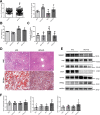
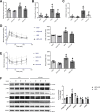
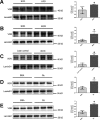
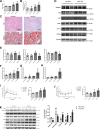


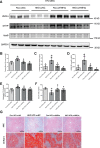

Similar articles
-
Hepatocyte vitamin D receptor regulates lipid metabolism and mediates experimental diet-induced steatosis.J Hepatol. 2016 Oct;65(4):748-757. doi: 10.1016/j.jhep.2016.05.031. Epub 2016 May 28. J Hepatol. 2016. PMID: 27245430
-
High fat diet-induced oxidative stress blocks hepatocyte nuclear factor 4α and leads to hepatic steatosis in mice.J Cell Physiol. 2018 Jun;233(6):4770-4782. doi: 10.1002/jcp.26270. Epub 2018 Jan 15. J Cell Physiol. 2018. PMID: 29150932
-
Sirtuin 2 Prevents Liver Steatosis and Metabolic Disorders by Deacetylation of Hepatocyte Nuclear Factor 4α.Hepatology. 2021 Aug;74(2):723-740. doi: 10.1002/hep.31773. Epub 2021 May 24. Hepatology. 2021. PMID: 33636024 Free PMC article.
-
Hepatocyte nuclear factor 4α in the pathogenesis of non-alcoholic fatty liver disease.Chin Med J (Engl). 2022 May 20;135(10):1172-1181. doi: 10.1097/CM9.0000000000002092. Chin Med J (Engl). 2022. PMID: 35191422 Free PMC article. Review.
-
A Comparison of the Gene Expression Profiles of Non-Alcoholic Fatty Liver Disease between Animal Models of a High-Fat Diet and Methionine-Choline-Deficient Diet.Molecules. 2022 Jan 27;27(3):858. doi: 10.3390/molecules27030858. Molecules. 2022. PMID: 35164140 Free PMC article. Review.
Cited by
-
Vitamin D Status of Mice Deficient in Scavenger Receptor Class B Type 1, Cluster Determinant 36 and ATP-Binding Cassette Proteins G5/G8.Nutrients. 2020 Jul 22;12(8):2169. doi: 10.3390/nu12082169. Nutrients. 2020. PMID: 32707802 Free PMC article.
-
Unlocking therapeutic potential: exploring cross-talk among emerging nuclear receptors to combat metabolic dysfunction in steatotic liver disease.NPJ Metab Health Dis. 2024 Jul 3;2(1):13. doi: 10.1038/s44324-024-00013-6. NPJ Metab Health Dis. 2024. PMID: 40603501 Free PMC article. Review.
-
Low serum vitamin D concentrations are associated with obese but not lean NAFLD: a cross-sectional study.Nutr J. 2021 Apr 1;20(1):30. doi: 10.1186/s12937-021-00690-9. Nutr J. 2021. PMID: 33794916 Free PMC article.
-
Indices of hepatic steatosis and fibrosis in prediabetes and association with diabetes development in the vitamin D and type 2 diabetes study.J Diabetes Complications. 2023 Jun;37(6):108475. doi: 10.1016/j.jdiacomp.2023.108475. Epub 2023 Apr 12. J Diabetes Complications. 2023. PMID: 37104979 Free PMC article. Clinical Trial.
-
Correlational study on the levels of 25-hydroxyvitamin D and non-alcoholic fatty liver disease in type 2 diabetic patients.BMC Endocr Disord. 2021 May 18;21(1):100. doi: 10.1186/s12902-021-00762-1. BMC Endocr Disord. 2021. PMID: 34006273 Free PMC article.
References
-
- Lee M. S., Han H. J., Han S. Y., Kim I. Y., Chae S., Lee C. S., Kim S. E., Yoon S. G., Park J. W., Kim J. H., Shin S., Jeong M., Ko A., Lee H. Y., Oh K. J., et al. (2018) Loss of the E3 ubiquitin ligase MKRN1 represses diet-induced metabolic syndrome through AMPK activation. Nat. Commun. 9, 3404 10.1038/s41467-018-05721-4 - DOI - PMC - PubMed
Publication types
MeSH terms
Substances
LinkOut - more resources
Full Text Sources
Medical
Molecular Biology Databases
Miscellaneous

